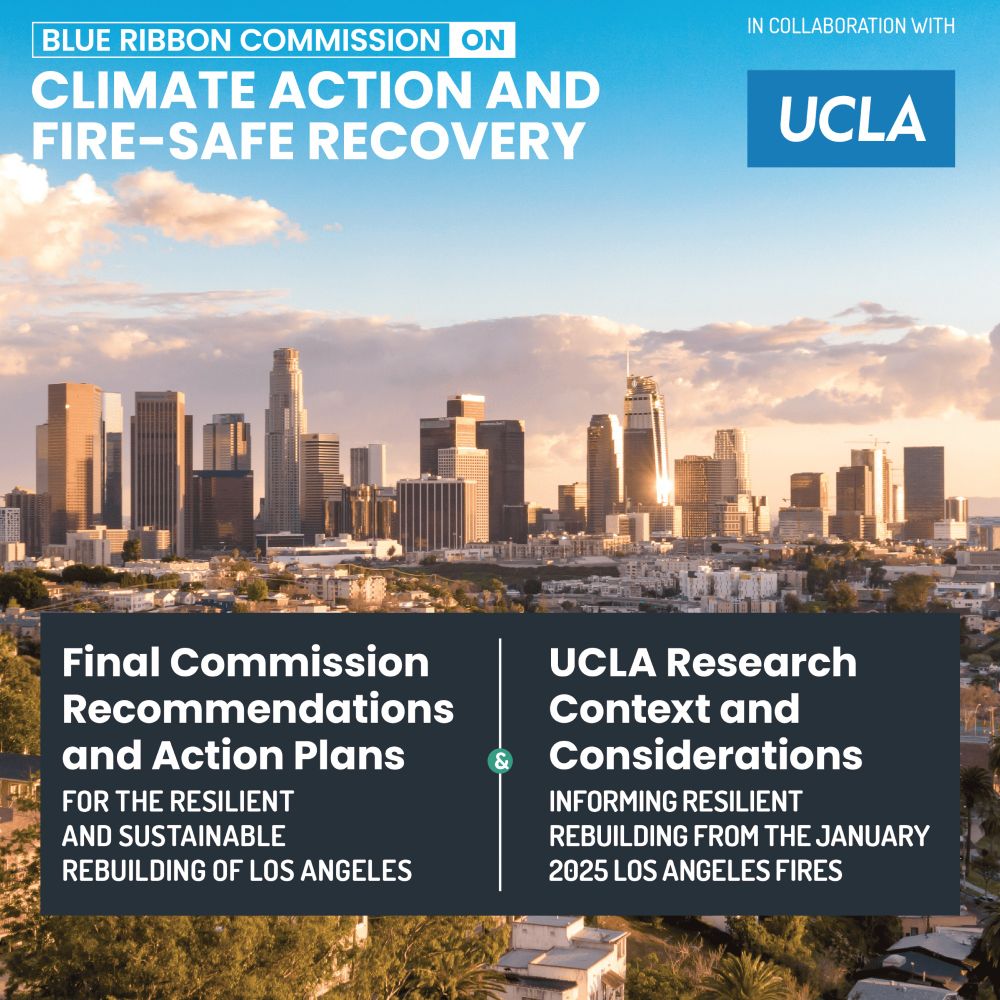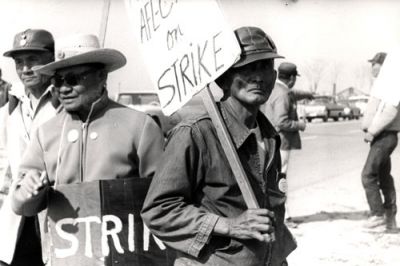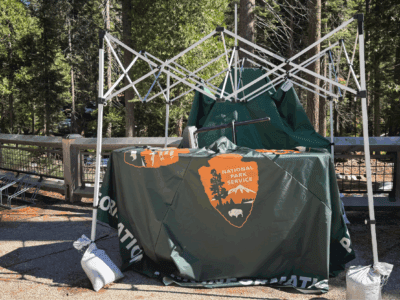Here’s How the Palisades and Altadena Can Rebuild Better
In partnership with UCLA, the Blue Ribbon Commission on Climate Action and Fire-Safe Recovery has released its final recommendations.
 The January 2025 Los Angeles fires were one of the most expensive climate disasters in our country’s history. They displaced tight-knit communities, took lives, shook our region to its core, and reminded us that as the climate continues to change, the risk of future disaster looms large. This recognition lead County Supervisor Lindsey Horvath to form the Blue Ribbon Commission on Climate Action and Fire-Safe Recovery (BRC), an expert commission tasked—with research and engagement support from UCLA—with identifying pathways for the Los Angeles region to recover not just expediently, but in ways that make communities safer and more resilient to climate impacts.
The January 2025 Los Angeles fires were one of the most expensive climate disasters in our country’s history. They displaced tight-knit communities, took lives, shook our region to its core, and reminded us that as the climate continues to change, the risk of future disaster looms large. This recognition lead County Supervisor Lindsey Horvath to form the Blue Ribbon Commission on Climate Action and Fire-Safe Recovery (BRC), an expert commission tasked—with research and engagement support from UCLA—with identifying pathways for the Los Angeles region to recover not just expediently, but in ways that make communities safer and more resilient to climate impacts.
For the past several months, I’ve had the honor of supporting the BRC’s work as part of UCLA’s research team. On Friday, the BRC released its final recommendations, the culmination of months of dedicated work and considered engagement with scores of community members and other stakeholders. The recommendations are comprehensive, covering everything from urgently needed immediate response actions to building standards and vegetation management efforts that can help make communities safer (and more insurable) to ways to support the expedient housing construction and workforce development the region will need to fully recover, and more. Alongside the recommendations, UCLA offers some deeper context and considerations that informed the BRC’s work and that highlight the importance of scientific, evidence-based research to chart a course ahead.
Critically, the BRC also proposes two overarching governance structures, a Resilient Rebuilding Authority and a Los Angeles County Fire Control District, that can facilitate implementation of many of the BRC’s recommendations.
Drawing on historical models for disaster recovery and principles already embodied in state law and disaster planning guidance, a Resilient Rebuilding Authority would serve as a one-stop shop to centralize recovery efforts. With representatives chosen by state and local elected officials, and community representatives from the burn areas, the BRC envisions an Authority would have the powers needed to manage rebuilding housing and community infrastructure efficiently and resiliently. An Authority, for example, could help combat community displacement by holding and redeveloping land while preserving a right of first negotiation for sellers, could redevelop a number of properties concurrently to take advantage of cost efficiencies, and could ensure rebuilt structures and infrastructure meet standards that harden them to future climate risks. And an Authority would also provide a single point of accountability and access for community members impacted by the fires.
While a Resilient Rebuilding Authority would help the region recover more smartly and quickly from the January fires, a new countywide Fire Control District would help protect communities from the risk of future fire. As the climate changes—and as the demand for housing ensures Angelenos will continue to live in the wildland-urban interface—the potential for wildfire to turn quickly into the kind of devastating urban conflagration we have seen not only here, but in Northern California and in Colorado in recent years, is growing. Community-scale vegetation management, structure hardening, and land use planning that adapt to take into account the best possible science will be critical. A Fire Control District would create a mechanism to establish these protections, making our communities safer into the future.
With communities reeling from January’s events and all eyes on Los Angeles as it prepares to host two major international sporting events within the next three years, recovery from the fires has to be swift—but the region must rebuild better to reduce the chances of another serious climate-fueled disaster. In the weeks following the fires, voters across Los Angeles County expressed strong support for more protective standards that can safeguard our communities against very real future risk. The BRC’s recommendations offer a roadmap to that kind of smart, sustainable recovery.
Reader Comments
One Reply to “Here’s How the Palisades and Altadena Can Rebuild Better”
Comments are closed.







During the fires many states provide support and sent fire trucks and equipment that could not be used due to the fact that they did not meet the State of California Air Resources Board emission standards. The State of California and the Air Resources Board need to develop a waiver to allow emergency use of fire trucks and equipment from out of state resources.